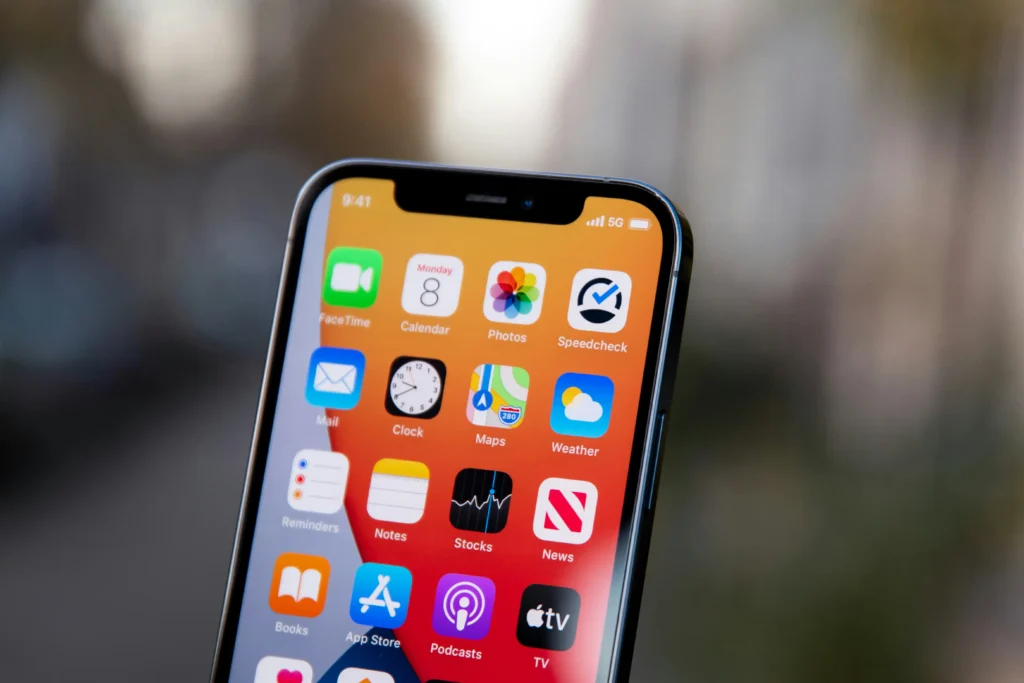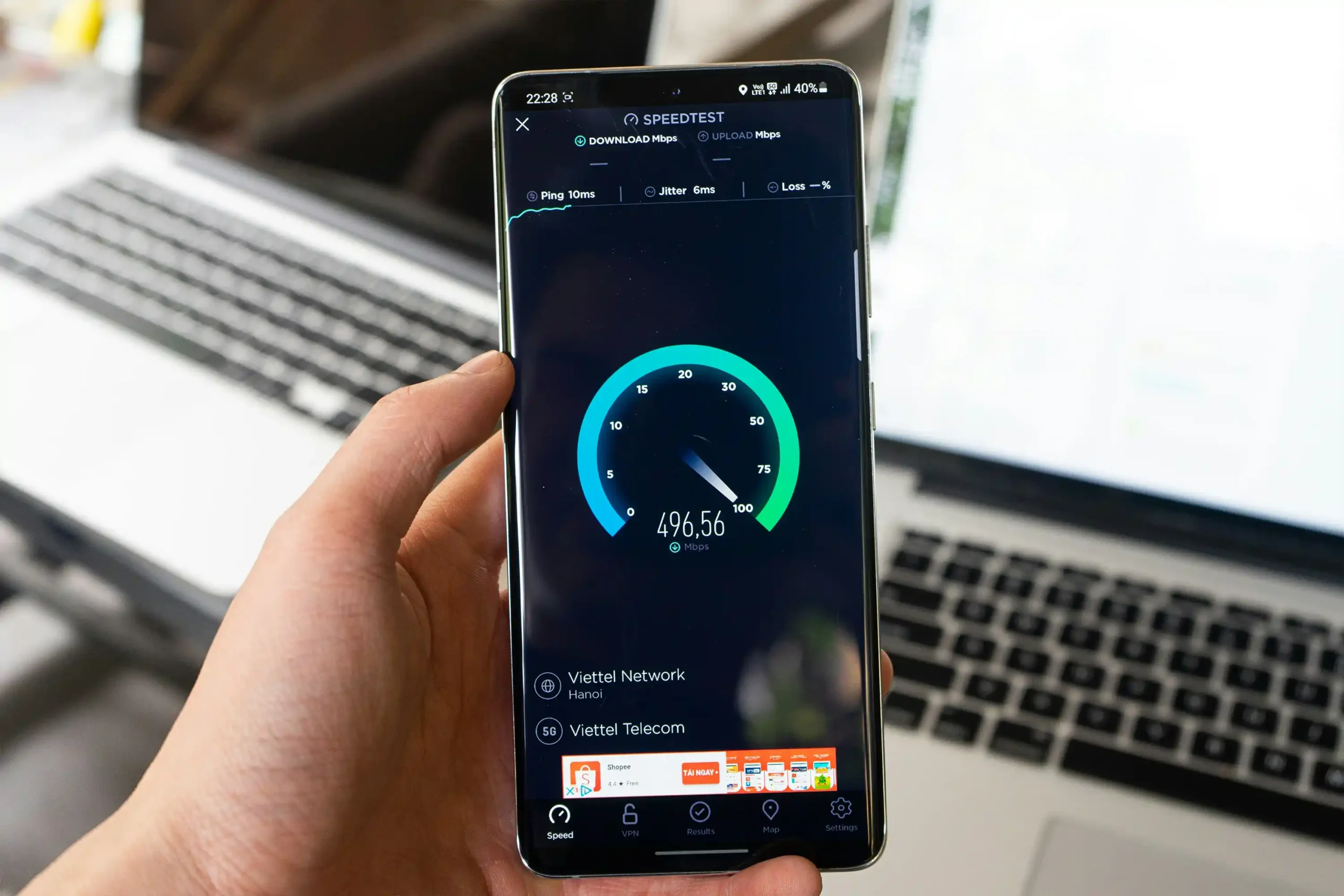The endless possibilities attributed to using the 5G network opens up an exciting world for many smartphone users.
There’s been a buzz about this groundbreaking data technology since its inception. So, it can be unnerving in the heat of this excitement if you can’t seem to connect to the 5G network after getting a new phone or SIM card.
There are many reasons why this happens; it could be that your device is not compatible with 5G yet. It could also be that you are in an area without a 5G network. This article will extensively cover most of the possible reasons your phone is not getting a 5G signal.
We will also share how to troubleshoot some of the issues and get the 5G network on your mobile device. But first, what is 5G?
What is 5G, Anyway?
We all know the 3G network and 4G(LTE), but what’s this 5G about? Well, the 5G network is said to be an improved version of the 4G network. 5G stands for “Fifth-generation,” meaning it’s the fifth generation of mobile networks. This 5G technology is designed to be the fastest wireless technology yet.
This network speed is the primary selling point of this groundbreaking technology. You might now be able to do what could take some minutes to achieve with 4G in just a few seconds with 5G. The expected possibilities with 5G are too many. 5G will have a tremendous impact on society, daily life, and the planet.
Besides mobile phone connectivity, this technology could potentially impact every sector of society, including health, finance, security, agriculture, etc. This technology is still being exploited and studied for building immersive experiences and many other purposes. The possibilities of 5G are so expansive that mobile phone users may only experience a part of its extensive benefits.
Many speculations are ongoing that the previous generation networks (4G, 3G, etc.) will become redundant soon. But is this likely to happen? Will 5G replace the older generation network and make them obsolete? The short answer is No. Many experts propose that the 4G network still has about a decade to coexist with 5G before becoming obsolete.
Everyone wants to get a firsthand taste of the 5G experience. As it is still a relatively new technology, there’s a lot to find out. So, if you’ve done all you can and still can’t seem to find a 5G signal on your phone, you’re not alone. There are a couple of reasons 5G is not working on your device.
Why Is My 5G Not Working?

To access 5G on your device, your phone must first be 5G-enabled, then your SIM should also be 5G-enabled. Furthermore, you will have to adjust your phone’s settings have to prioritize the 5G network because your device can sometimes switch to a lower network like 3G or 4G for your phone to function optimally. We’ll address this later in the article.
Most new and high-end devices are now 5G-enabled, with users enjoying lightning-speed connectivity with increased efficiency. However, even with a 5G-enabled phone, you might not be getting a 5G signal on the phone for some reason. These reasons include:
● Your phone settings are not set to receive 5G network
● Your mobile carrier has not rolled out 5G service yet
● You are far from a 5G cell tower
● You are not using a 5G SIM card
● Your data plan is not appropriate for 5G
This list is by no means exhaustive, as these are only some of the likely reasons your phone is not connecting to the 5G network. Check your phone to know which of these reasons might be the issue. You can quickly fix these issues when you’ve identified them.
How Do I Get 5G To Work on My Phone?
Figuring out why you’re not getting 5G is the first step to making it work. First off, not every new phone can connect to the 5G network, so you need to confirm that your phone is genuinely 5G-enabled.
A phone that shows the 5GE signal is not necessarily 5G-enabled. For example, 5G is not the same as the 5GE service offered by AT&T. This 5GE (“5G Evolution”) technology from AT&T was not 5G but an advanced LTE network that allowed users to enjoy faster download speeds and other more optimized functions. To check your phone’s 5G status, follow these steps:
1. For iPhone
Enter your phone’s settings menu. Select mobile > mobile data options. There should be an option to change “voice and data” and select “5G Auto” in the mobile data options menu. Also, the “data mode” should be on the “allow more data on 5G” option. When you’ve selected these options, turn your phone’s airplane mode on and then off, or restart your phone to get it connected to the 5G network.
If, after this process, you still can’t find a 5G icon on your iPhone’s network status bar, contact your network carrier to know if 5G is available in your area. Also, if you can’t find these 5G options in your phone’s settings, contact your carrier to know if you are on a 5G data plan.
Note that accessing the 5G network with a dual SIM iPhone 12 is only possible if your device is on iOS version 14.5 or higher. Also, note that using the low power mode on your iPhone will disable the 5G network. Also, for iPhone users in the US to enjoy the full benefits of the higher frequency 5G network, they have to be using a device purchased in the US.
2. For Android
Some new Android devices from companies such as Samsung and LG, amongst others, are now 5G-enabled. First, to find out if your phone has a 5G option, access your phone settings. If you use a smartphone running on the Android 10 version or earlier, from your phone settings, tap on “SIM card and mobile network,” then, if it’s a dual SIM device, tap on the desired SIM. In the SIM menu, select “preferred network type.” If you find a 5G option in this menu, your phone is 5G-enabled.
For higher android versions, tap on connections> mobile network > network mode from your Settings menu, then select the 5G if the option is available.
For Samsung Galaxy devices, to start using 5G, go to your device settings, enter network mode, tap on 5G or global, and restart your phone. Your galaxy device will now be able to connect to 5G as long as there’s 5G service in your area.
Finally, keep in mind that 5G is still a relatively new technology, and thus more information about it is still unfolding. Some carriers have not fully rolled out 5G plans for their customers, and therefore the 5G service is limited on some carrier networks. Also, although some carriers support 5G, using their older SIM cards will not give you access to their 5G service. It’s best to contact your service provider for more information.
Related Questions

1. Why does my phone keep switching between 5G and LTE?
Every 5G-enabled phone is also compatible with past-generation mobile technologies such as 3G and 4G. Thus, your device might fall back to an old network option when 5G is not working optimally, depending on your data settings.
Many phone manufacturers prioritize the battery life of their smartphones and thus set the default data modes to consume minimal power. For 5G-enabled iPhones, the default option for “Voice and data” is “5G auto.” This setting allows the network protocol to fall back to 4G or lower if necessary to save battery life. Also, for android devices, if the preferred network type/mode is on “5G/4G auto,” the network mode will switch between these two protocols depending on which of them the phone deems better at a given moment. Set your preferred network type as “5G only” for android devices to keep your network from changing. For iPhone, set your Voice and Data option as “5G on” in your Mobile Data options.
2. How do I know if I have 5G in my area?
Since the deployment of 5G globally in 2019, it has spread to many cities, with many carriers now providing network access. However, 5G is not available in all cities. To know if there is 5G network in your area, it’s best to contact your mobile carrier for inquiries. Alternatively, you could check your carrier’s 5G coverage map. You could also check some 5G worldwide coverage maps online to know if there’s 5G in your city.
3. How fast is 5G?
5G as a network protocol is still evolving, and so far, its recorded performance rates are nowhere close to its theoretical potential. Theoretically speaking, the 5G network is said to reach download speeds as high as 50 Gbps. Although, many agree that 10Gbps is a more realistic limit. This makes it faster than the 4G (LTE) network.
Many factors can also affect how fast your 5G network works. For example, the number of people connected to a 5G tower will significantly affect its speed. Also, your device type and its proximity to a cell tower can affect your download speed. It’s also important to note that 5G operates on different frequency bands. Each of these bands operates with varying speeds and latency. Note that other carriers may use their 5G service with varying frequency bands, thus determining the network speed.
Conclusion
Almost everyone is upgrading to the 5G network these days. Many phone users are also encountering problems accessing the 5G network. This article answers the question, “Why am I not getting 5G?” First off, you must ensure that your device is 5G-enabled. Afterward, you must confirm that your mobile carrier has rolled out their 5G service.
However, even if you’re using a compatible phone and your carrier supports 5G, you could be in an area without nearby 5G towers. Your phone may not be able to find the 5G network if you’re using an older SIM or an incompatible data plan.